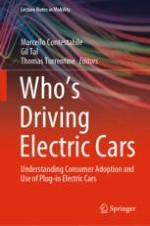2020 | OriginalPaper | Chapter
What Can Driving Patterns Reveal About the Suitability of PEVs in Sweden? Analysis and Policy Implications
Author : Frances Sprei
Published in: Who’s Driving Electric Cars
Publisher: Springer International Publishing
Activate our intelligent search to find suitable subject content or patents.
Select sections of text to find matching patents with Artificial Intelligence. powered by
Select sections of text to find additional relevant content using AI-assisted search. powered by
